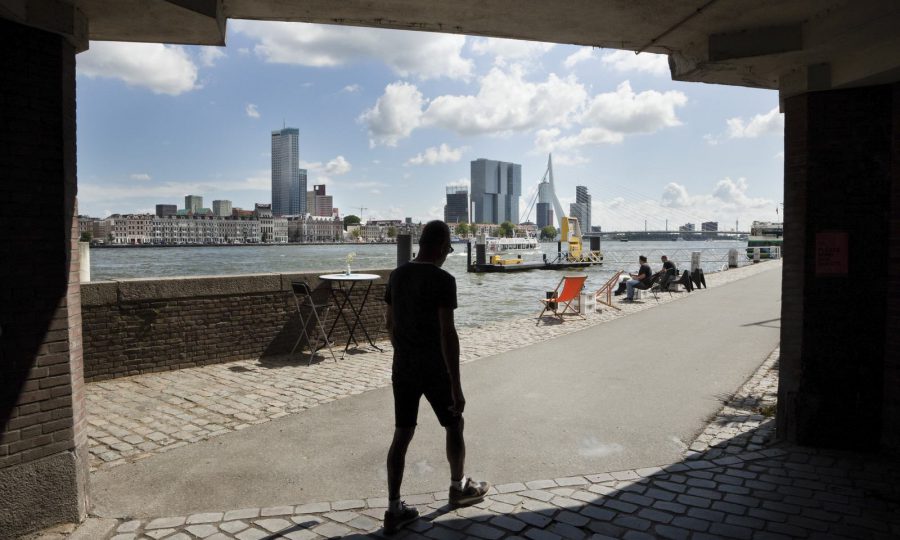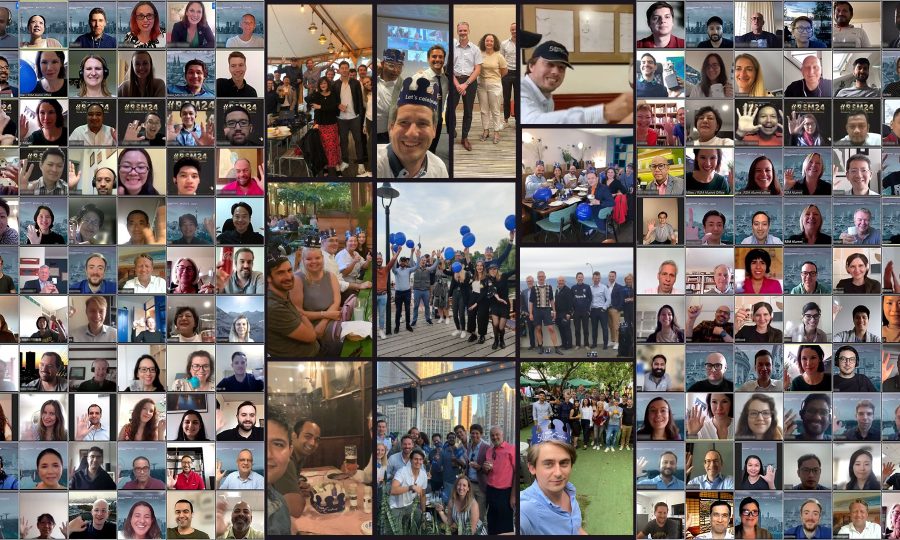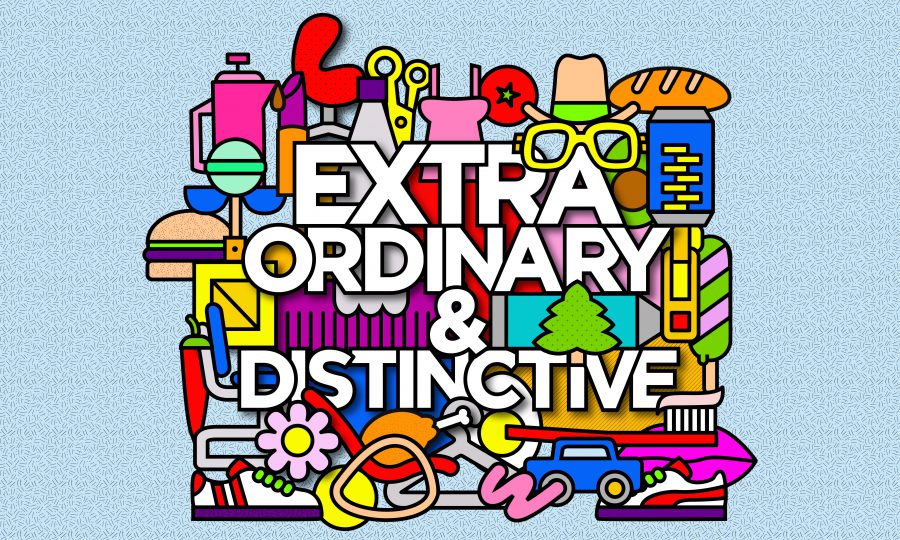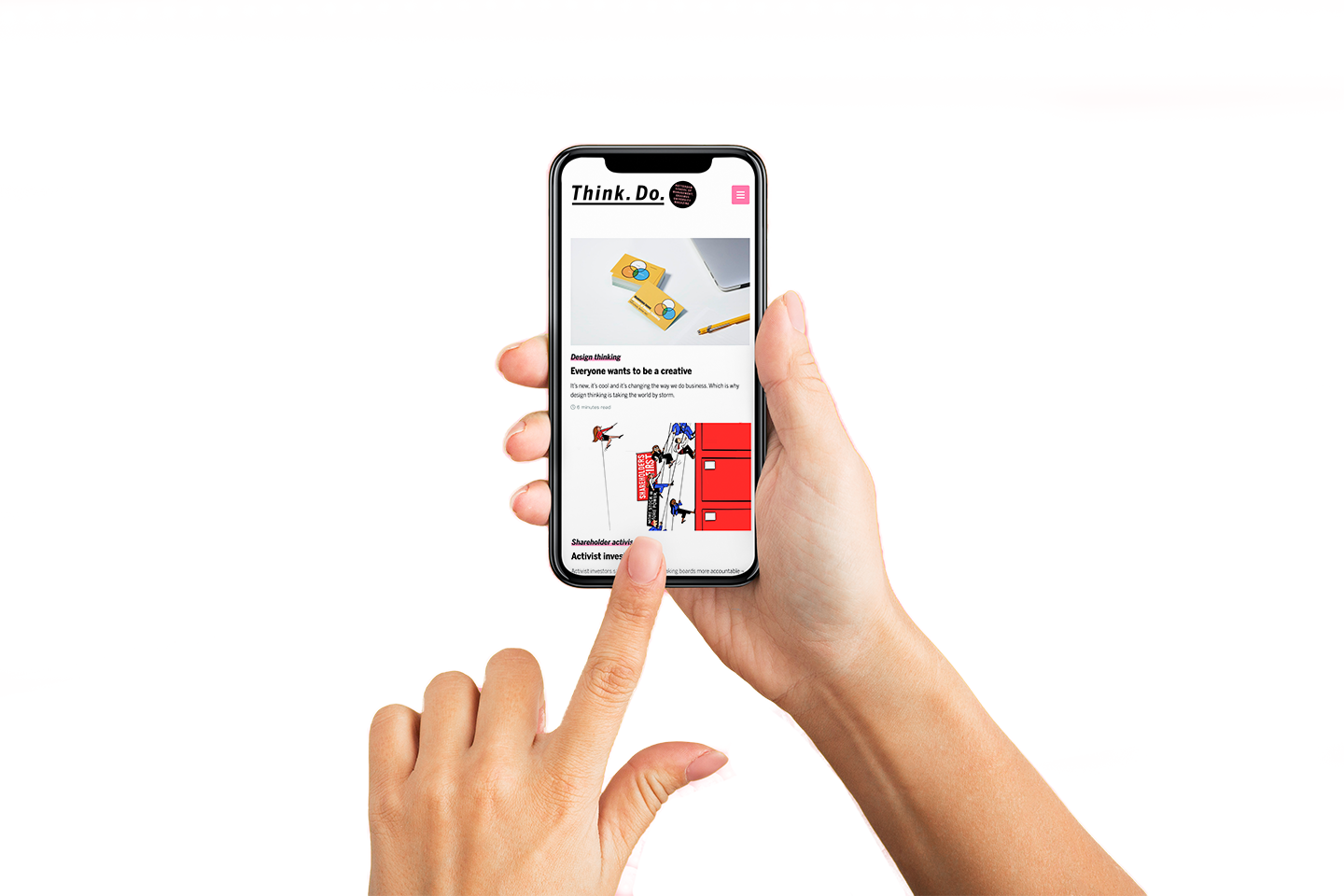Everyone wants to be a creative
It’s new, it’s cool and it’s changing the way we do business. Which is why design thinking is taking the world by storm.
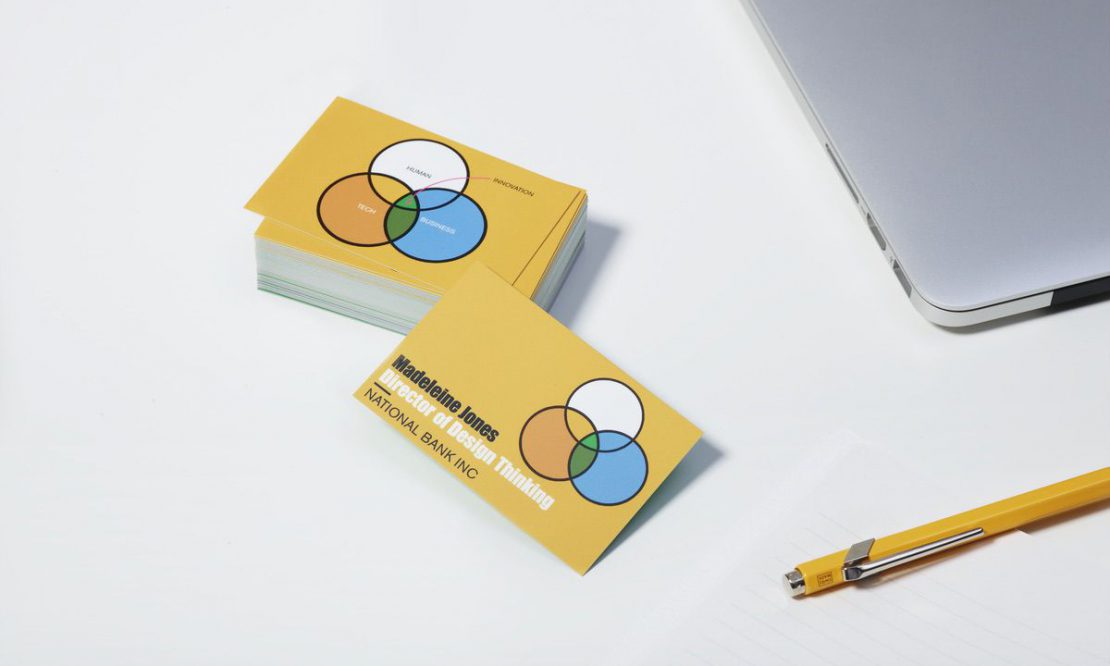
You know something is up when McKinsey analysts start hanging out with designers. When Boston Consulting Group partners start discussing the importance of experimentation. When every new job title seems to have the word ‘creative’ in it. Design thinking – a problem-solving strategy that seems more at home in a s tudio than an office – is taking the world by storm. And no wonder: essentially democratic and human-centred, it is practical, fast, flexible – and revolutionary. Its potential for improving the way we do business is huge.
“A traditional business approach is rational,” says Dirk Deichmann, Associate Professor at the Department of Technology and Operations Management. “You analyse data, look at what has happened in the past, have ideas and try to solve the problem – often from behind a desk.” In other words, you take an educated guess.

Laptops: Our home screens may have got smaller, but at work – from dual monitors to retina screens – bigger is better.
Tea: The traditional leaf just doesn’t cut it in 2020. Modern creatives drink flat whites, short shots and, erm, spiced pumpkin lattes. But only when they think no-one is looking.
“In design thinking, instead of thinking through everything, you go out and talk to people, observe them, get qualitative data; you prototype, test and iterate,” he says. “If it’s a new idea you may not have data anyway, so you need to generate insights from what you are experiencing. From behind a desk you get these ‘pet projects’ that someone at the top has thought of, that no-one can stop. In design thinking you spend time getting the challenge right first, figuring out the problem you really need to solve. Then you prototype a solution and keep testing it – going back, changing the prototype and testing it again.”
At RSM, Deichmann teaches design thinking alongside designers. “Product or service designers start by really getting to know their users,” he says – not the way traditional business approaches a problem. “We can’t continue with the way we do things now,” he says. “In order to remain competitive, businesses need ideas and innovation. We need to be able to change and adapt to address some of the complex challenges we face.”
Time to get playful
Big disruptors like Airbnb could never have happened with a traditional approach, says Deichmann. “If they had run a survey of guests and analysed industry reports, they might have decided hotels needed more rooms, or better rooms. They would never have arrived at staying in other people’s homes – the assumption would have been that people wouldn’t want to do that.
“You need to be a bit playful, willing to take a risk. And test everything, in low-fidelity experiments, like the lean startup approach. Booking.com, for example, is constantly testing on a very large scale – its landing page appears differently almost every time you access it and they are testing what works, going back and refining, again and again. That’s design thinking.”
Francis Gerber (EMBA, 2020), a management consultant at Accenture, has firsthand experience of the power of design thinking. “I worked on a project for five months to develop a platform to help jobseekers find jobs,” she says. “The assumption was that youth unemployment was the problem, but our research showed that there were plenty of resources available for young people and that they were actually quite connected in society because they were coming out of school and university. In fact, the data showed us that refugees and the over-50s remained unemployed the longest.”

Speakers: Let the music play on – yes, to drown out your noisy colleague, but, more importantly, to show off your creative credentials. So think carefully before you turn up the volume on your Spice Girls collection.
Pantone book: It’s not an office, it’s a studio. And that (adjacent) is not coral, its 905U. Because there is always someone who thinks it’s OK to use a non-brand colour.
Reusable cup: Disposable coffee cup? So last century. But pity the person who has to carry them all to the café.
So, Gerber and her colleagues went to NGOs working with those people, who helped put together diverse working groups. Those groups were then interviewed in a morning workshop about the barriers to their jobseeking, bringing up some interesting answers.
“Refugees were in a vicious circle around the ‘inburgering’ settlement process in the Netherlands,” she says, “where they can’t access Dutch lessons until they have a house. So, they lose 18 months waiting for the house, then can’t get a job because they don’t speak Dutch.” The solution – bringing forward the Dutch lessons – was obviously beyond the scope of Accenture’s online platform, so they passed it on to the relevant NGOs, which could then take it up with government.
For the over-50s, it emerged that they felt their perceived lack of technical prowess was damaging their prospects in the job market. “One guy, for example, said he’d been asked if he knew how to use a computer, when he had rolled out the iDEAL online payments platform! So that group said they wanted a Tinder-style app, where employers would swipe right on a skillset.”
Later in the workshop, Gerber and her team tested Accenture’s existing platforms. “We already knew from the morning that the platforms wouldn’t address the issues that had come up, and, unsurprisingly, the groups were not impressed by the platforms!” So, Gerber and her colleagues went back to the drawing board, armed with better knowledge of their users and a deeper understanding of the problem.
“I’m learning on my MBA that if you mix people up, from different ages, ethnicities, genders, at different stages in their life and career, you get solutions that are fit for purpose for a bigger group,” she explains.
This may all sound very sensible, but it is not actually how businesses, leaders and consultants generally operate. Christina Papathanasi (MiM, 2016) is an Agile Transformation Consultant at Heineken, formerly with KPMG. She says: “Usually how it works in big organisations is ‘I have a great idea, let’s go and spend millions developing it.’
In consulting, traditional partners in their 50s are used to being the ones with the knowledge and the mandate to tell people what to do. They don’t say ‘This is my idea, let’s test it’, because to hear ‘No, it doesn’t work’ would be shocking for them. It’s about big egos.”
Design thinking, instead, gives power back to the end user, and even the employees. “In design thinking I’m more like a psychologist,” she continues. “I start by empathising with customers, and management and employees: asking what they think. For instance, I worked with a very large waste management company that was going through a lot of changes. One thing we came up with was a template people had to use when they put ‘change’ in the email subject line, to avoid much of the back and forth of asking which department, which system, which location. Something simple, but it relieved the stress of the change manager, and saved time.”
And it had another important result: people felt consulted. “People felt they had been heard, that’s a basic human need. And they felt that the solution had come from them. Afterwards, they said, ‘We liked the fact that you didn’t come in and tell us what to do. You came to help us solve the problem for ourselves.’”
This approach is often formalised in design thinking with “co-design” workshops where everyone is actively made equal. “There’s no hierarchy,” says Gerber. “The youngest person can bring ideas before the most senior. So, you start by creating an environment of trust – you use ice-breakers, get people to laugh at themselves, draw themselves, talk about a time they didn’t know something – and establish a scenario where everyone is just human. In this way we did an online workshop around advocacy for girls in Africa and the Philippines, who did as well as the Accenture consultants at coming up with ideas for getting girls into tech.”
Responding to the monsters
The world doesn’t always need big ideas; sometimes the small ones are just as good, says Deichmann. “It’s almost too easy to have ideas,” he says. “But implementing them is something else. And ideas might be a tiny part of a bigger process but still have a big effect. Having an idea about how drivers can save petrol makes the company more efficient, and an employee having that idea makes them more entrepreneurial and more committed to the company. But it’s not the big vision. Everyone from the secretary to the engineer can contribute.”
Papathanasi says that, to her, design thinking is just “what makes sense”. It helps companies respond to increasingly savvy and demanding end users. “Consumers and users are monsters now, it’s not like in the 1990s where you were happy with what you got. The pace has changed – you can have whatever you want on your doorstep the next day, and we have all the information in our hands. The world is so complex now, everything changes every second and we can’t develop fully fledged solutions to problems any more. We need to chop up the problem, develop solutions, test and adjust them.”
And this ushers in an era of a new kind of leader, she adds. “It’s not one who has all the answers, but one who knows their area extremely well and gathers knowledge, then lets go of the ‘how’; who trusts enough to let the employees and the customers figure it out, by trying things out together.”
Develop yourself with a course on design thinking
In RSM’s six-week online programme Design Thinking you will learn methodology and tools to develop new ideas through customer insights. This facilitated programme will help you to shift your mindset and to embrace a radically different approach to new product and service development.
